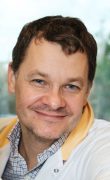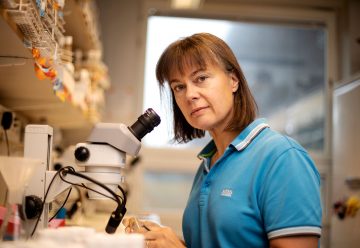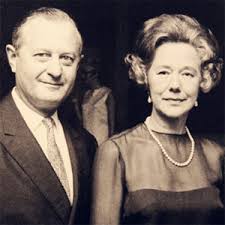GRANTS. Lill Mårtensson, Jonas Nilsson, Michael Olausson, Ruth Palmer, Diana Swolin-Eide and Peter Thomsen are receiving a total of almost SEK 17 million from the IngaBritt and Arne Lundberg Research Foundation, primarily for the purchase of apparatus, aids and equipment related to cancer, renal disease and orthopedics.
The largest grant, SEK 5 million, was awarded to Jonas Nilsson’s project on malignant melanoma, which aims at creating cell therapies for patients with this form of cancer.

“This cell therapy has been developed through our work with humanized animal models, known as avatar mice, and we are gratified that this now takes us a step closer to clinical usability,” says Nilsson, who is delighted to receive support from the Lundberg Foundation.
Clean rooms and bioreactors
Immunotherapy produces a good outcome for many patients with malignant melanoma, but for half of the patients, the treatment does not work. Jonas Nilsson’s team is working on altering the immune cells outside the patient’s body so the enhanced immune cells (called CAR T cells) then can be reintroduced in large numbers. This requires a special clean room and special machines known as bioreactors, for which the grant from the Lundberg Foundation will provide funds. This paves the way for the establishment of cell therapy in Gothenburg.
Important collaborations
As part of the research, two employees have been trained to work with Good Manufacturing Practice (GMP), a regulatory framework governing the manufacture of pharmaceuticals, among other things. Jonas Nilsson will collaborate with several other teams in the project, including Anders Lindahl at the Cell and Tissue Laboratory, which is a GMP lab approved by Medical Products Agency Sweden, and Lars Ny at the Department of Oncology.
“It will still be challenging and costly to ensure quality at every stage. The equipment we can now buy will help with automation so that not all the work will be manual,” says Nilsson.
Advanced 3D cell printing

Six of the 13 researchers who receive grants in this round work at the University of Gothenburg. Ruth Palmer, a professor at the Institute of Biomedicine, also received one of the larger grants from the Lundberg Foundation. She has been awarded SEK 3.9 million for advanced 3D cell culture technology and microscopy to increase understanding of neuroblastoma disease. Using the adaptable confocal microscopy system, Palmer and her colleagues can study and analyze neuroblastoma cells and examine cells and tissues of model organisms with the goal of identifying important events in neuroblastoma development.
Headquarters in Gothenburg

The IngaBritt and Arne Lundberg Research Foundation was founded by IngaBritt Lundberg in 1982 in memory of her husband, wholesaler Arne Lundberg, who was born in Gothenburg in 1910. The foundation promotes medical research, mainly dealing with cancer, renal disease and orthopedics, and gives priority to the purchase of apparatus, aids and equipment. Research in the Gothenburg region takes precedence. The foundation has its headquarters in Gothenburg. http://www.lundbergsstiftelsen.se
The following researchers at Sahlgrenska Academy received funding from the Lundberg Foundation:
Lill Mårtensson, SEK 3,000,000.
B-cell components and sub-populations important for the onset of cancer and as biomarkers.
Jonas Nilsson, SEK 5,000,0000.
Cell-based cancer immunotherapy.
Ruth Palmer, SEK 3,900,000.
Signal transmission mechanisms of the ALK tyrosine kinase receptor and control of neuroblastoma growth.
Michael Olausson, SEK 2,400,000.
Preconditioning and preservation of organs for transplantation.
Diana Swolin-Eide, SEK 900,000.
Translational studies on growth and skeletal development in children and adolescents.
Peter Thomsen, SEK 1,500,000.
Cellular and molecular mechanisms for osseointegration and bone regeneration in large bone defects.
TEXT: ELIN LINDSTRÖM











